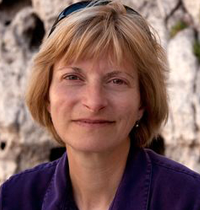NOTE: Images in this archived article have been removed.

Nyangatom herders lead their cattle to the Omo River to drink. With Gibe III Dam holding back the river’s water, grasses for livestock grazing and soil moisture for crop production have diminished downstream for the indigenous tribal communities, spreading hunger in the lower Omo Valley. Photo: Alison M. Jones, courtesy of International Rivers.
In the lower Omo River Valley of southern Ethiopia, a spreading humanitarian emergency that threatens to spawn conflicts in the region is largely being met with silence from both the Ethiopian government and the international community.
The filling of the reservoir behind Gibe III Dam on the Omo River is holding back the flows needed by some
200,000 indigenous people in southern Ethiopia and northern Kenya to sustain their food production and livelihoods.
“People are starving and dying,” according to a trusted source who wished to remain anonymous for fear of repercussions from speaking out. “They need international support.”
The indigenous communities of the Omo Valley, including those of the Bodi, Hamer, Karo, Kwegu, and Mursi tribes, rely on the natural flood cycles of the Omo River for their sustainable practices of flood-recession farming, fishing and livestock grazing. Like generations of their forebears, they plant sorghum, maize and beans in the riverside soils after the yearly flood, relying on the moisture and nutrient-rich sediment the Omo deposits each year.
With the filling of the Gibe III reservoir, the needed water hasn’t reached the tribes’ riverside lands, curtailing harvests and grazing. Desperate to find grass, herders have moved their cattle into
Mago National Park, which has unleashed fighting with government soldiers charged with protecting the park and its wildlife. Many pastoralists have been killed, according to my source.
The Ethiopian government views the Gibe III Dam as essential to its economic advancement. The dam rises 243 meters (797 feet), can hold back 14.7 billion cubic meters of water, and has a planned hydropower capacity of 1,870 megawatts. Electricity generation
has already begun.
Gibe III is the third and largest dam in a planned cascade of five dams on the Omo. It is intended to supply half of Ethiopia’s electricity, as well as provide power to export to neighboring Kenya, Sudan and Djibouti.
The
government is transforming more than 375,000 hectares (926,000 acres) of the lower Omo into industrial plantations. Virtually all of the big sugar lands are adjacent to the west bank of the Omo River, which is vital agricultural and grazing land for the local tribal communities.
In a process known as “villagisation,” the Ethiopian government
reportedly forces indigenous communities in the Omo Valley to make room for the big commercial plantations, without adequate consultation or compensation. Interviews conducted in several lower Omo communities during a 2012 field investigation by the U.S. Agency for International Development and the U.K.’s Department for International Development show that “egregious human rights violations have taken place,”
according to the California-based Oakland Institute. The aid agencies, according to the institute, have chosen to ignore those findings.
The siphoning off of Omo River water for industrial agriculture will have long-term impacts not only on the valley’s indigenous communities, but
also on Kenya’s Lake Turkana, which receives 90 percent of its inflow from the Omo River. Situated at the northern end of the Great Rift Valley, Lake Turkana is one of the oldest lakes on Earth. It supports a rich traditional fishing culture and provides vital protein for local people.

This satellite image shows the filling of the reservoir behind the Gibe III Dam on the Omo River in Ethiopia. Photo: Landsat/courtesy of International Rivers
Scientists have warned that the lake could shrink dramatically with the completion of Gibe III.
The reservoir-filling process
could reduce inflow to the lake by two-thirds for three years. But even after the reservoir is filled, flows into Lake Turkana will be reduced by the diversion of Omo River water for large-scale irrigated agriculture. Without the river’s yearly supply, Lake Turkana would steadily lose water, because evaporation losses would no longer be balanced by inflows.
Indeed, the devastation to the lake’s ecology and fisheries could rival that of Central Asia’s
Aral Sea, which has lost more than 80 percent of its volume of water through excessive diversions of the two rivers that flow into it.
Without question, Ethiopia needs water and energy development to move more of its people out of poverty. But the government should cease the filling of the Gibe III reservoir until it has remedied the hunger, destitution and displacement being wrought upon the tribal people who have lived sustainability in the Omo Valley for centuries.
It should also work with river scientists to develop a strategy for the dam’s operation that will secure the river flows tribal people depend on for their crop production and livestock grazing.
Meanwhile, the humanitarian crisis worsens in the Omo Valley, with the potential for more starvation and, as land and water resources dwindle, more conflict between the tribes and local governments. The forced resettlement of the indigenous Omo people leaves them with no sustainable means of feeding themselves or their livestock.
Donor countries that provide aid to Ethiopia could help by putting pressure on the government to remedy the tragic consequences now unfolding.
As my source communicated to me: Educated pastoral people “are too afraid to say the truth….I understand! But the truth is people are starving.”








